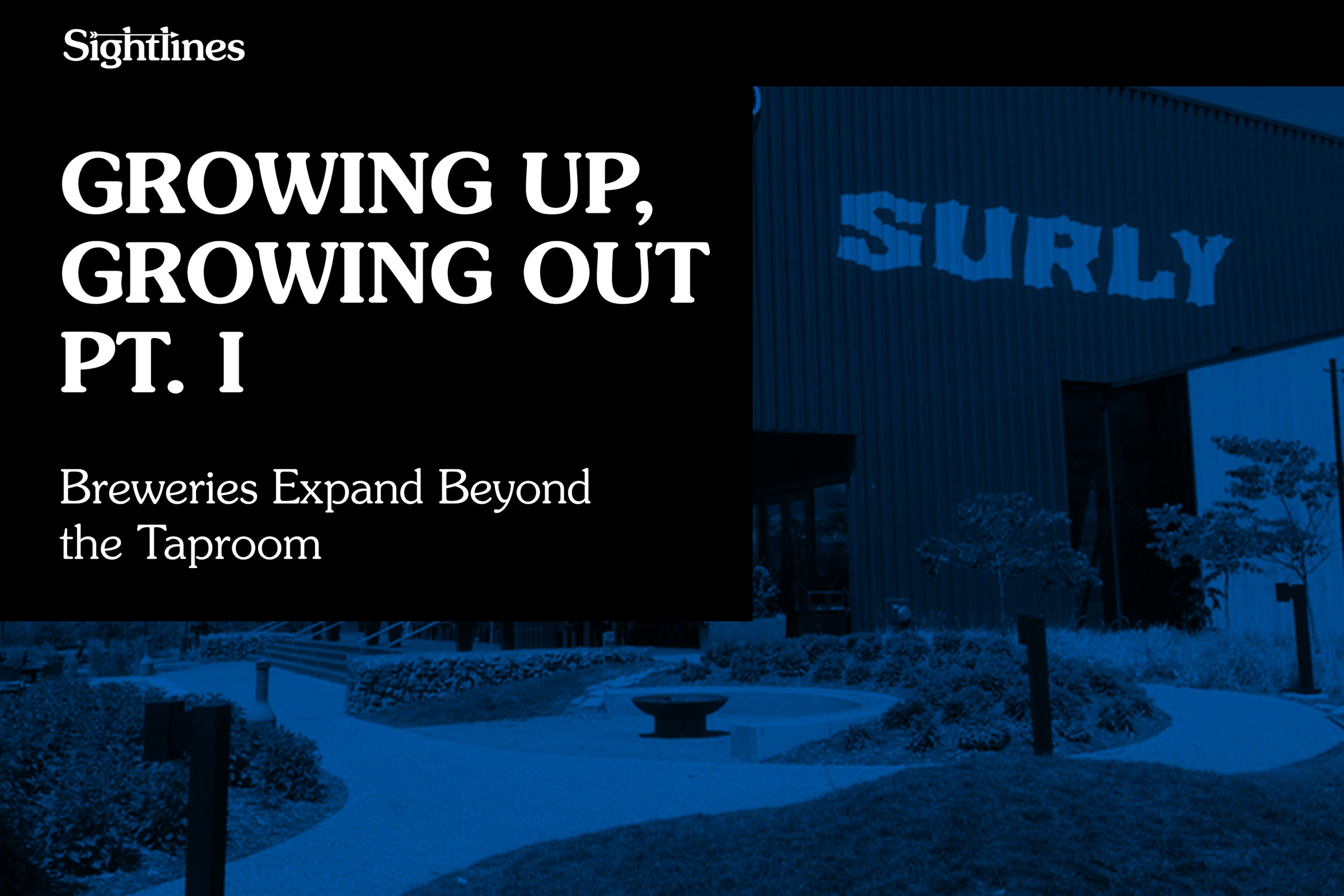In 2011, Minnesota Governor Mark Dayton signed a new law that would effectively transform his state's beer industry, allowing breweries to begin own-premise sales. Aptly nicknamed the "Surly Bill," its origins began with Minneapolis' Surly Brewing proposing a $30 million expansion to create a destination brewery with two restaurants, a beer hall, an outdoor beer garden, and a concert venue.
“It opened the doors for large-scale investment that would really redefine the way we engaged with breweries,” says Jonathan Weinhagen, president of the Minneapolis Chamber of Commerce.
The move—while an expensive one—was an important choice for Surly, who has been on the fast-track of growth ever since. After producing about 17,000 barrels the year its namesake bill was signed, Surly has marched directly toward 100,000, and is now the 39th biggest Brewers Association-defined craft brewery in the country. Meanwhile, the brewery’s increased capacity has opened up new opportunities in markets like Chicago.
But like so many other aspects of the brewing industry, one business decision reverberates. The benefit hasn’t just been for Surly, but its hometown as well. Jobs, taxes, and revitalization have all come with it.
The “brewery rebuilding a neighborhood” story is well-worn at this point, but projects like Surly’s are meant to utterly transform a brewery from taproom hangout to something akin to an adult theme park. It’s a similar tale on a much larger scale.
"Something like that," Weinhagen says of Surly's project, “brings buildings and land back to life."
It also provides more space and more time for drinkers to presumably spend more money at a single brewery location. Along with beer and food, Surly will host its third annual summer concert series in 2018 at its own 4,000-person capacity Festival Field. Headlining acts in 2018 include Spoon, Grizzly Bear, and Sylvan Esso.
“We wanted to build something that Minnesota was proud of and you would want to bring your friends to when they’re visiting from out of town,” says Surly owner Omar Ansari.
Ansari was inspired for his project while visiting San Diego in 2010, where companies like Stone Brewing and Ballast Point acted as anchors for the city’s beer industry and tourism. He recognized the value in having a business “bigger than others that can bring people to a community.” Doing something “huge and audacious” to help Surly and Minneapolis stand out was front of mind.
“The nature of breweries is they can last a long time and they’re cultural gathering points for people,” he says. “Craft didn’t have the capacity to do this kind of project until recently. It’s a reflection of our dedication to customers, our cities, and communities we’re in.”
Surly’s decision to change its proposition to customers was among the first in a series of moves by regional or national breweries with greater ambitions. It wasn’t long ago West Coast breweries building East Coast hubs was the construction topic du jour, but as smaller breweries have proven, an own-premise model with focus on taproom interactions and sales is a big part of the future of the industry. Between 2015 and 2017, the amount of beer sold on location by U.S. breweries has essentially doubled from 1.27 million to 2.41 million BBLs, according to numbers reported to the TTB. (No less, the Brewers Association projects 2017’s tally to be between 2.5 and 2.7 million BBLs.)
So now, instead of national production facilities cranking out packaged bottles and cans to hopefully find shelf space among all the other options available, more businesses are embracing the impact of bringing customers to them. And it’s not just about a bar, either.
Dogfish Head and BrewDog have gone a little above and beyond in their own-premise projects, taking the term slightly more literally. Dogfish opened a hotel in 2014 and BrewDog plans to open its own by the end of the year. Shipyard Brewing, as part of a $65 million redevelopment plan to try and turn around its business, is planning its own 105-room hotel as well as office space, pharmacy, and a TV station dedicated to brewing.
But it’s the more practical renovations and expansions that are picking up steam. These are not cheap projects, but they also have potential to be big difference makers.
In Ohio, Fat Head’s Brewery is essentially doubling in size at with its brand new Middleburg Heights facility, a $12 million expansion that'll grow its beer and food production. It’ll also size up a small taproom that'll seat more than 300 people. DESTIHL dropped $14 million for its new brewery in Normal, Illinois, and has a space large enough to host its own “Field Day” celebration.
Hardywood Park Craft Brewery recently opened a $28 million facility in Virginia, taking up 24 acres for a brewhouse, a nearly 7,200-square-foot taproom and music venue, and plenty of space for food trucks, walking paths, small farming space, and bocce courts. Hardywood wants to attract around 250,000 visitors a year to their new location, with co-owner Eric McKay noting that the tangential attractions—which is to say: not just beer—are the things that “draw people in from quite a distance away, who will then stay at local hotels, shop at local stores, and eat at local restaurants,” according to RVA Magazine.
These upgrades represent a new wave of own-premise establishments. It’s not just about a debate of how family-friendly your taproom can be, but a question of how to maximize the value of a visit. And the answer is a boon for businesses and hometowns alike.
In part two of this series, we’ll explore what that means for an upcoming project that will further solidify a brewery’s “destination” reputation as much as its hometown.
—Bryan Roth
Growing Up, Growing Out, Pt. 1 — Breweries Expand Beyond the Taproom
Growing Up, Growing Out, Pt. 2 — Small-Town Indiana is So Metal
Growing Up, Growing Out, Pt. 3 — North Carolina’s Interactive Beer Disneyland

